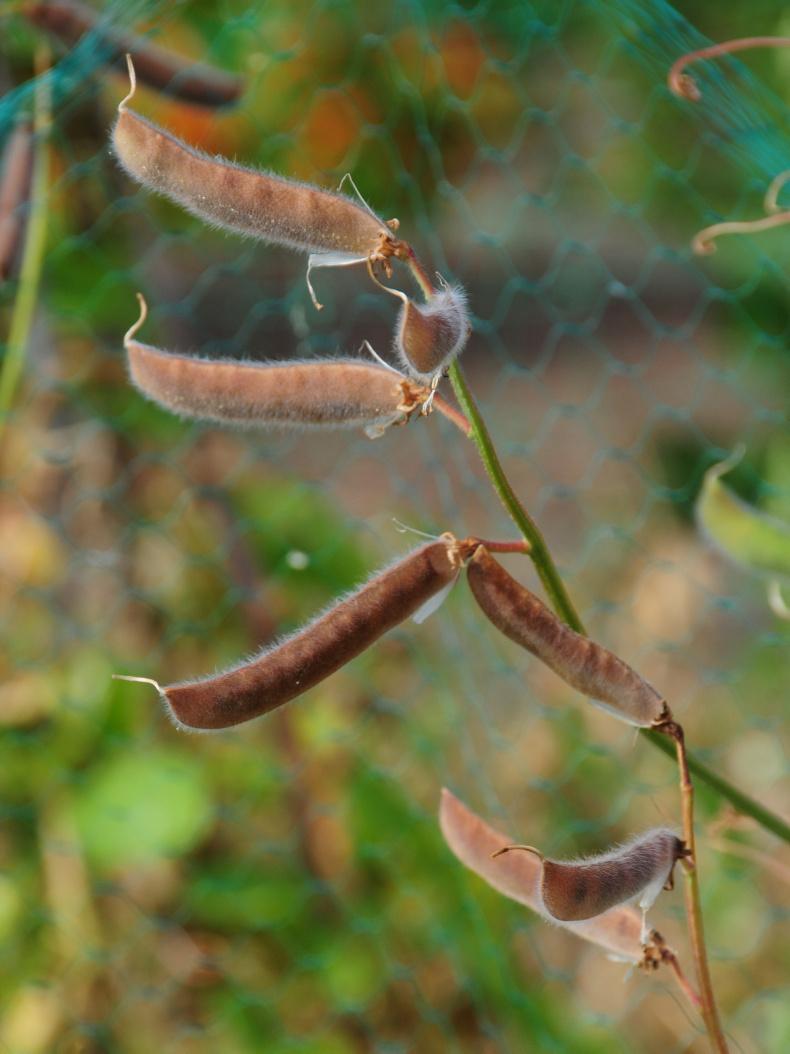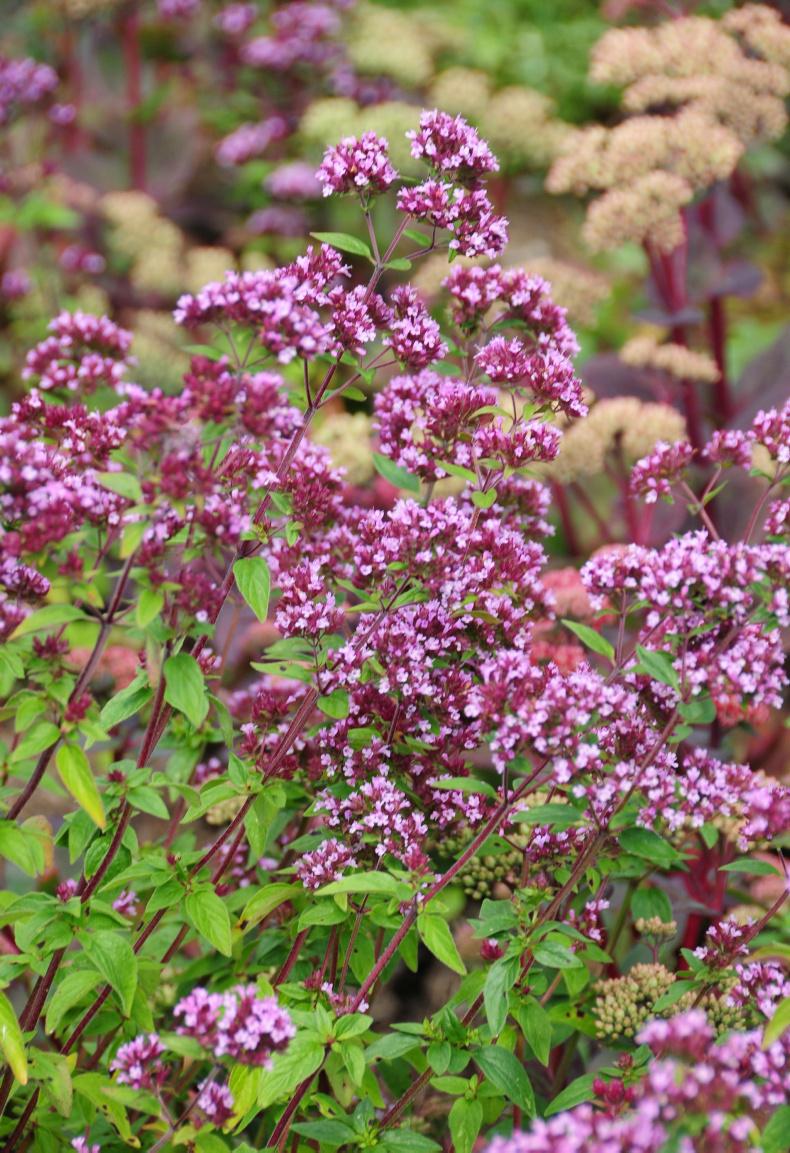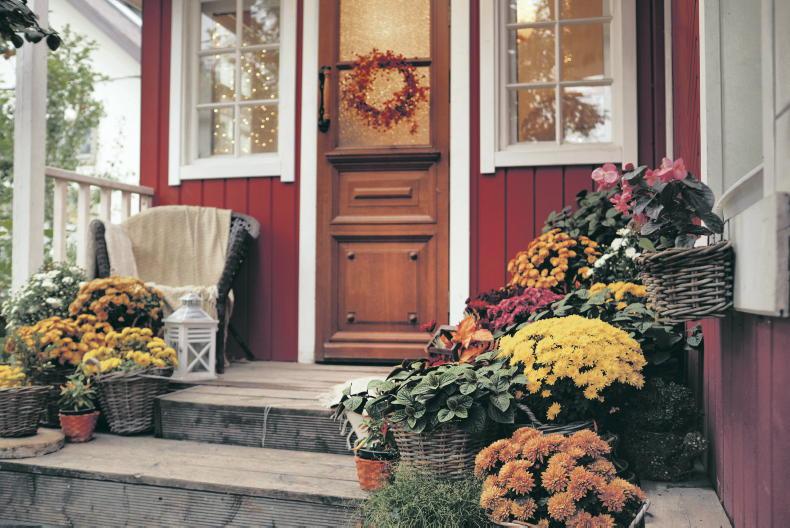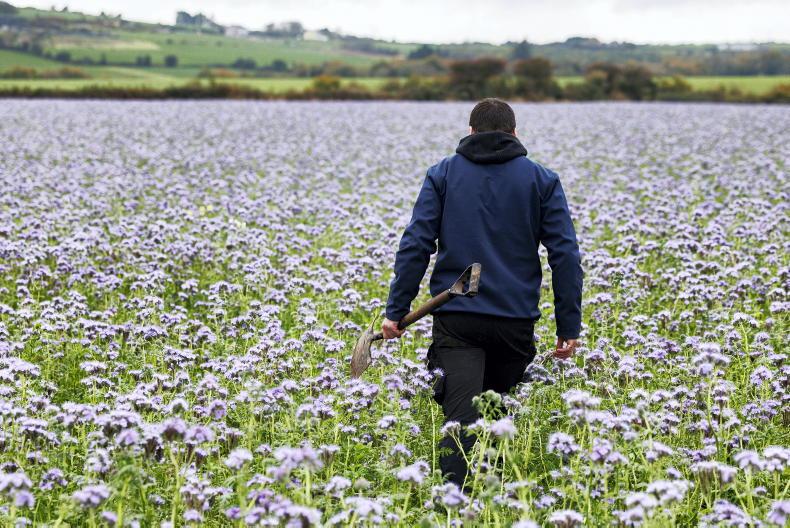There is some debate, and plenty of confusion, about what oregano actually is. It is used a lot in cooking, especially in Italian dishes, and most oregano for kitchen use comes from Mediterranean countries, where there are several native species. But oregano is a catch-all name it seems, and batches of culinary oregano can be a mixture of dried herbs, including sage, thyme and rosemary, as well as one or more of several species of oregano, or origanum, to use its botanical name. So the name oregano applies to the culinary herb, sometimes a mixture, and not necessarily to one species of origanum. The herbs used in the mixtures are all related to origanum itself – all being members of the sage family, all originating in the Mediterranean region and all being aromatic, with related active constituents.
There is even an Irish native oregano relative called wild marjoram, origanum vulgare. The second part of the name means common. It is common in some parts of the country, notably the midlands and other areas of limy soil over rock, and it is absent from other areas. The wild marjoram makes a bushy plant to about 60cm or a bit more, with stiff, upright stems. It flowers from July to September, with clusters of small, pink flowers with small, purple bracts that set the flowers off. It grows on very well-drained soil, on dry roadside banks and ground over rock. The plant can be aromatic, but not always it seems. The flowers are very attractive to insects for nectar.
Two main kinds are grown as kitchen herbs: pot marjoram and sweet marjoram. Pot marjoram, also called French marjoram, is origanum onites, with tall stems with pink or white flowers – very like the wild marjoram but bushier and with smaller flower heads. It is aromatic and can be grown as a little bush. Sweet marjoram is also called knotted marjoram, origanum marjorana, because of the knotted flowerheads filled out with bracts. The knotted tips can be used as well as the leaves, and have a sweet aroma and taste, and can be a good sage substitute, not as strong.
There are several origanum species grown for their decorative qualities. The most widely grown of these is the golden-leaved version of the wild marjoram, Origanum vulgare, ‘Aureum’. This plant is a low, spreading herbaceous perennial with flower stems to about 40cm, with pink-purple small flowers in clusters. In winter it dies back to a low carpet of bright-golden leaves. The leaves are more limy-yellow when in flower. Some people do not like the flowers and cut away the flower stems. Although it is sometimes used in cooking, it is not as aromatic.
From Turkey originally, origanum laevigatum is usually represented by its named variety ‘Herrenhausen’. This grows to about 40cm or so, with fine, woody stems and dark-green leaves that flush with purple when new in spring and later too in winter, and dense flowerheads of purple-pink and purple bracts, flowering all summer into autumn. It looks like a purple form of catmint and can be used in much the same way. There is also a form called ‘Hopleys’ which has large heads of pink flowers.
The most decorative of the origanums is origanum rotundifolium, or ‘Kent Beauty’. While all the marjorams have bracts, this one has the largest and most colourful, starting cream and turning rich pink, dangling on wiry stems, the flowers being enclosed. This is a prostrate clump-former for a rock garden or dry bank, or it is ideally to hang over the edge of a low-retaining wall or kerb. Like all origanums, it likes well-drained soil, not overly fertile and full sunshine. CL
Dead-head peas
It is already too late for the sweet pea plant in the photograph – the seed pods have already formed, with ripening seeds inside. This photo was taken at the end of August last year and the flowers had not been dead-headed when they fell. The seeds, when set, send out a powerful hormone to halt the development of more flower buds. Having no seeds equals more flowers. If you have time to dead-head, you can extend the flowering of sweet pea by a few weeks, until the plants run out of energy. If the pods are gone brown they are nearly ready to pop, so save some of the seeds to sow again. They may not be the same as the original, but they will be okay.
Fruit, vegetables and herbs
Raspberry canes that have finished fruiting can be pruned and the new canes tied into position. If there are too many canes, reduce the number to about 10-15 per metre. Vigorous apple trees can still be pruned to increase future crops. Tie branches down to encourage flower buds.
Trees, shrubs and roses
Early-flowering shrub roses and ramblers can be pruned by removing some of the shoots that flowered. Many established trees are showing early autumn colouring. Water young trees that are still struggling. Maintain a weed and grass-free ring of at least one metre diameter around each.
Flowers
Prevent weeds from going to seed. It’s possible to collect seeds of perennial flowers. Many of them are easy to raise from seeds – sown when ripe or air-drained and stored in open bags, in a cool, dry place or in a fridge. Take cuttings of tender plants, such as geraniums, fuchsias and African daisy.
Lawn
With all the rain and sunshine, most lawns have done quite well, but some dried out on light land and are patchy. If you have a wildflower lawn do not use fertiliser, except some phosphorus and potash if the growth is very poor. Prepare for a new lawn or re-seeding by cultivating in good conditions.
Greenhouse and house plants
Take the tops off tomato plants, as well as all flowers and fruit smaller than a chestnut, to boost the green fruit that is already present. Tidy up all kinds of plant debris and be careful not to overwater, because from now on grey mould disease becomes a problem for many greenhouse plants.










SHARING OPTIONS